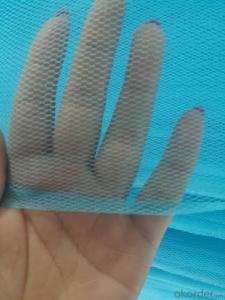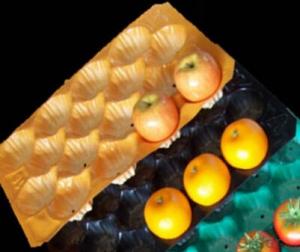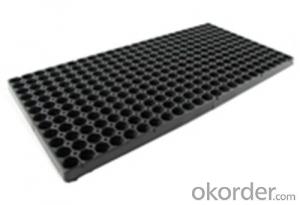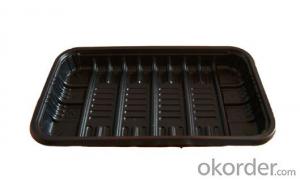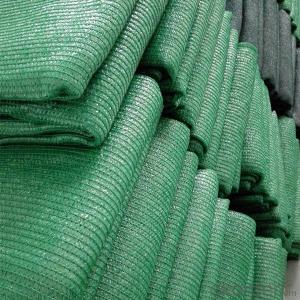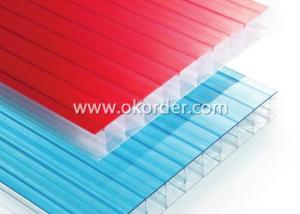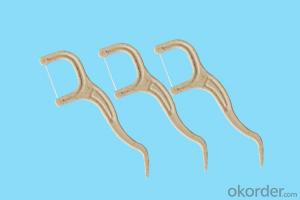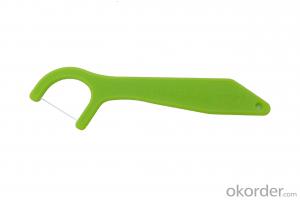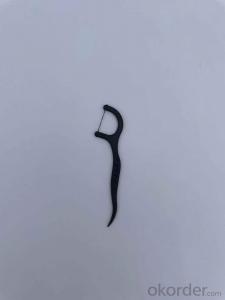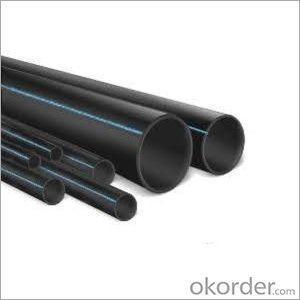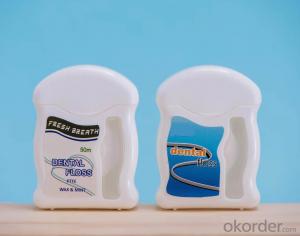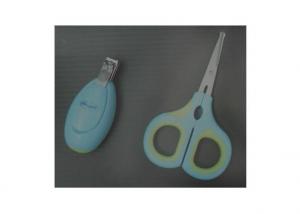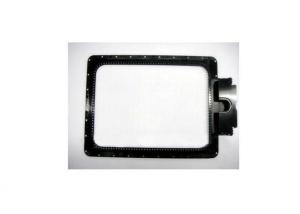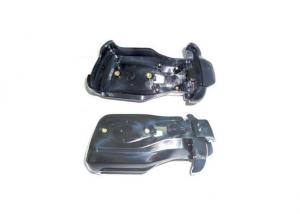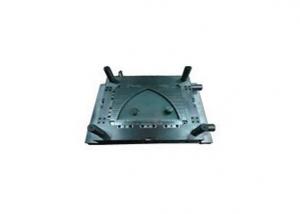Precision Injection Mould for PDA with Scanner Integrated Machine
- Loading Port:
- China Main Port
- Payment Terms:
- TT or LC
- Min Order Qty:
- 1 Set watt
- Supply Capability:
- 100 Pieces per Month watt/month
OKorder Service Pledge
OKorder Financial Service
You Might Also Like
Detailed Product Description
1.Standard LKM
2.Finish: Texture MT11015
3.Material : PC
4.Mould Life: 300,000 shots
Precision injection mould for PDA with the scanner integrated machine
Certificate: ISO 9001:2008
20 years experience
Name |
Plastic injection Mould products |
Plastic material |
ABS,PC,ABS+PC,PA66,HIPS,PE,PP,etc |
Cavity & Core |
NAK80,S136 HRC48~52° |
Mould base |
LKM , HASCO |
Nos of Cavity |
As customer rquest |
Mould Standard |
DME, HASCO |
Mould Runner |
Hot Runner,Cold Runner … |
Surface finish |
Texture, High glossy ,Painting,Chrome Plating |
Delivery time |
20-35 Days |
Mould Packing |
Wooden Box or as your requirement |
Our Advantages:
-- Competitive price.
-- Professional, excellent, but simple design.
-- High quality, reliability and long mould life.
-- Professional customised R&D program.
-- Diverse and mature craft.
-- Continuous service and supply.
-- Strict quality management.
-- High-quaity and integrated equipments:
-- High-speed processing center.
--Sodick wire cutting.
--Sodick cnc sinker EDM, EROWA Tooling System.
--40 sets plastic machinery with 80-1600MT.
--All our operations satify the standard of ISO9001:2008 certification.
--Exported products comply to requirements of Rohs certificate.
- Q:How does electronic plastic affect the overall reliability of electronic devices?
- Electronic plastic can affect the overall reliability of electronic devices both positively and negatively. On one hand, electronic plastic is lightweight, durable, and offers flexibility in design, allowing for smaller, lighter, and more portable devices. This can enhance reliability by reducing the risk of physical damage and improving the overall performance of devices. On the other hand, electronic plastic is prone to wear and tear over time, leading to potential issues such as cracking, degradation, or loss of functionality. Therefore, the choice and quality of electronic plastic used in devices play a crucial role in determining their overall reliability.
- Q:How does electronic plastic contribute to energy efficiency in electronic devices?
- Electronic plastic, also known as polymer-based materials, plays a crucial role in enhancing energy efficiency in electronic devices. These plastics are lightweight, flexible, and can be easily molded into various shapes, allowing for the design of sleek and compact devices. By reducing the weight and size of electronic components, electronic plastic helps to minimize power consumption, as smaller devices require less energy to operate. Additionally, these plastics possess excellent insulation properties, reducing the risk of energy loss through heat dissipation. Moreover, electronic plastic can be engineered to possess high dielectric strength, enabling efficient energy storage and transmission in capacitors, batteries, and other power storage devices. Overall, the use of electronic plastic contributes significantly to the energy efficiency of electronic devices by optimizing design, reducing power consumption, and improving energy storage capabilities.
- Q:What are the scratch and abrasion resistance properties of electronic plastic?
- Electronic plastic typically exhibits good scratch and abrasion resistance properties due to its durable nature and the incorporation of additives such as fillers and coatings. These properties help protect the electronic components from damage caused by everyday wear and tear, physical impacts, and contact with external objects, ensuring the longevity and functionality of the electronic devices.
- Q:How is electronic plastic recycled or disposed of?
- Electronic plastic can be recycled or disposed of through various methods. The recycling process typically starts with the separation of different types of plastics using automated sorting systems. The plastic is then shredded into smaller pieces and undergoes a cleaning process to remove any contamination. After that, the clean plastic is melted down and formed into pellets or granules, which can be used to make new plastic products. However, if recycling is not possible due to the complexity of the electronic device or its components, the plastic can be disposed of through regulated methods such as incineration or landfilling, ensuring environmental and health standards are met.
- Q:Can electronic plastic be made from recycled adhesives and coatings?
- Yes, electronic plastic can be made from recycled adhesives and coatings. The recycling process involves breaking down the adhesives and coatings into their base components, which can then be used as raw materials for manufacturing electronic plastic. This helps reduce waste and promotes sustainability in the electronics industry.
- Q:How is electronic plastic manufactured?
- Electronic plastic is manufactured through a process called injection molding. This involves melting plastic pellets and injecting the molten material into a mold cavity, which is then cooled and solidified to form the desired shape. The plastic used in electronic devices is typically a blend of different polymers, additives, and reinforcements to enhance its properties such as heat resistance, electrical conductivity, and flame retardance.
- Q:How does electronic plastic impact the manufacturing process of electronic devices?
- Electronic plastic, also known as polymer, plays a crucial role in the manufacturing process of electronic devices. Its impact is mainly positive, as it offers several advantages. Firstly, electronic plastic is lightweight, making it easier to handle and transport during production. Secondly, it is highly flexible, allowing for the creation of intricate designs and shapes, enabling the miniaturization of electronic components. Additionally, electronic plastic is an excellent insulator, protecting the delicate internal circuitry from external factors such as moisture and heat. Lastly, it is a cost-effective material, reducing manufacturing expenses and making electronic devices more affordable for consumers. Overall, electronic plastic enhances the manufacturing process of electronic devices by providing versatility, protection, and affordability.
- Q:How does electronic plastic affect the heat dissipation of electronic devices?
- Electronic plastic can negatively affect the heat dissipation of electronic devices due to its insulating properties. Unlike materials such as metal or ceramic, electronic plastic has poor thermal conductivity, meaning it hinders the transfer of heat from the device to the surrounding environment. This can result in increased temperatures within the device, potentially leading to overheating and reduced performance or even damage to the components. Therefore, it is crucial to consider the thermal properties of electronic plastic when designing and manufacturing electronic devices to ensure efficient heat dissipation.
- Q:What are the anti-static properties of electronic plastic?
- Electronic plastic typically possesses anti-static properties due to the addition of conductive fillers or coatings. These properties prevent the accumulation and discharge of static electricity, minimizing the risk of damage or disruption to electronic components.
- Q:Can electronic plastic be made flame retardant?
- Yes, electronic plastic can be made flame retardant. Flame retardant additives can be incorporated into the plastic during the manufacturing process to reduce its flammability and enhance its fire resistance properties. These additives work by delaying or inhibiting the spread of flames, reducing the risk of fire and enhancing safety in electronic devices.
1. Manufacturer Overview |
|
|---|---|
| Location | Guangdong, China (Mainland) |
| Year Established | 2010 |
| Annual Output Value | |
| Main Markets | North America South America Eastern Europe Southeast Asia Africa Eastern Asia Western Europe Central America Northern Europe Southern Europe South Asia |
| Company Certifications | |
2. Manufacturer Certificates |
|
|---|---|
| a) Certification Name | |
| Range | |
| Reference | |
| Validity Period | |
3. Manufacturer Capability |
|
|---|---|
| a)Trade Capacity | |
| Nearest Port | Osaka Japan,Ravenna Italy,Montreal American |
| Export Percentage | 61% - 70% |
| No.of Employees in Trade Department | 6-10 People |
| Language Spoken: | English, Chinese |
| b)Factory Information | |
| Factory Size: | 5,000-10,000 square meters |
| No. of Production Lines | Above 10 |
| Contract Manufacturing | OEM Service Offered |
| Product Price Range | |
Send your message to us
Precision Injection Mould for PDA with Scanner Integrated Machine
- Loading Port:
- China Main Port
- Payment Terms:
- TT or LC
- Min Order Qty:
- 1 Set watt
- Supply Capability:
- 100 Pieces per Month watt/month
OKorder Service Pledge
OKorder Financial Service
Similar products
New products
Hot products
Related keywords




